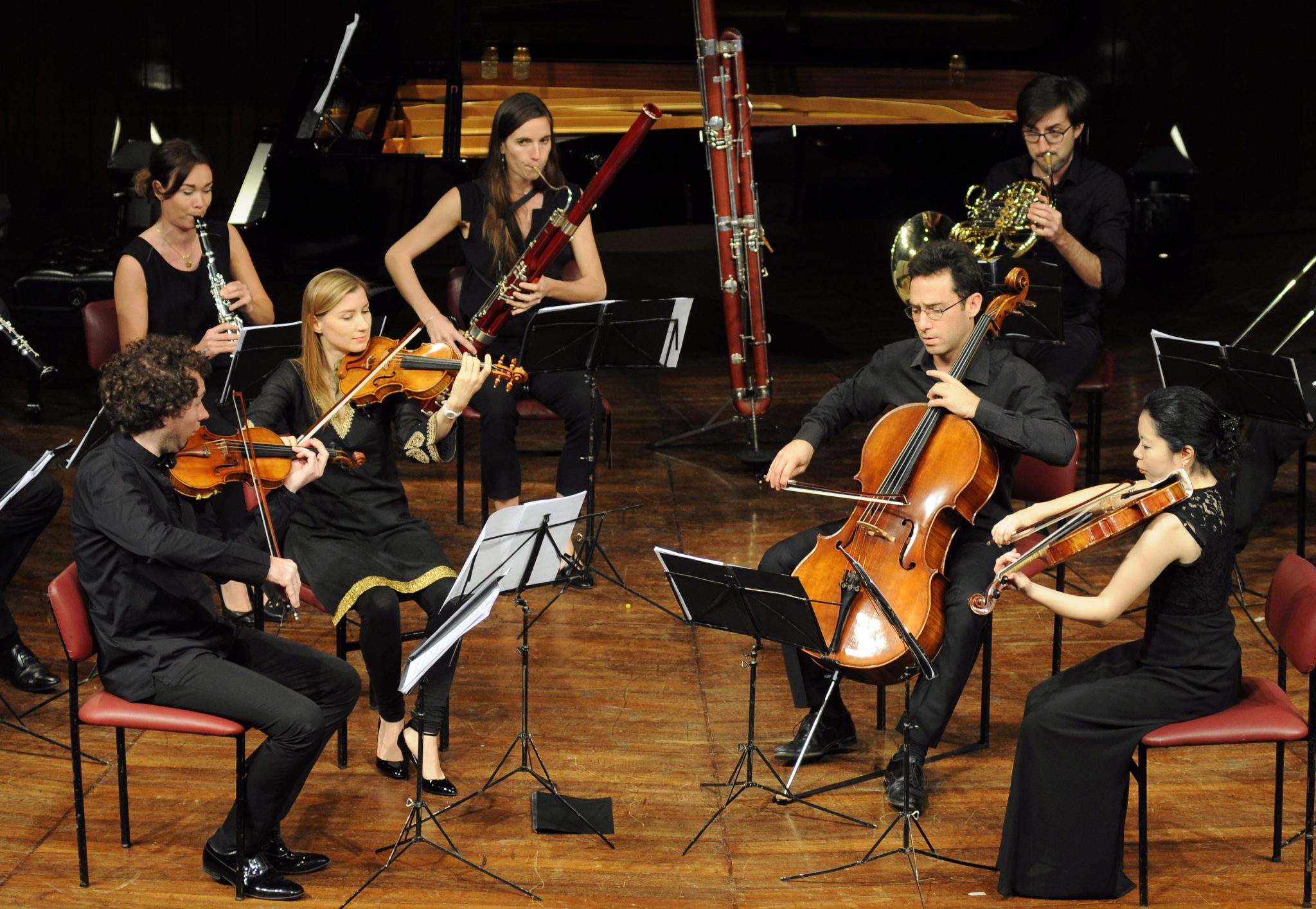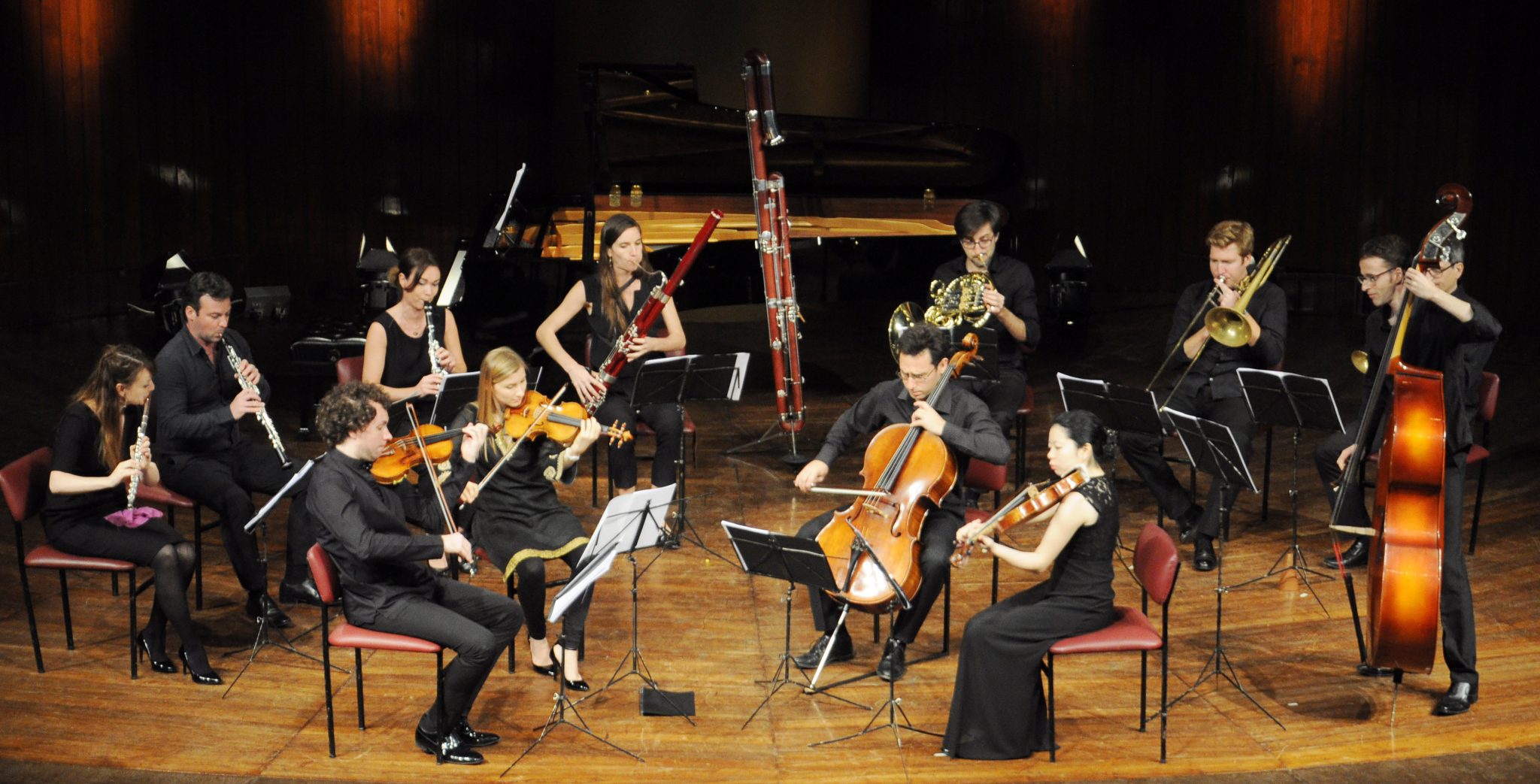RETURN OF THE FABULOUS ARTIE’S CHAMBER ORCHESTRA

On the 21st and 22nd November Gauthier Herrmann was joined by 13 young French musicians for the twentieth edition of the Artie’s festival, a major bi-annual chamber music festival at the NCPA, now completing ten years successively. Over the years, we have heard much fantastic music including Beethoven string quartets, Brahms piano trios and quartets, Dvorak quartets and quintets, Mozart, Haydn, Schubert and other less familiar music.
This pair of concerts focused on German composers alone. The first day was Beethoven and Schubert and on the second day, pieces by Brahms and Bruckner were arranged for the chamber orchestra.
They chose to open the first concert with the beautiful and rarely played early variations for piano trio on a theme by Wenzel Mueller-Ich bin der Schneider Kakadu (I am the tailor cockatoo). The long introduction with throbbing piano and running scales, accompanied by songful phrases on violin and cello led into the theme which was very similar to Mozart’s Papageno aria from the Magic Flute. Afterwards, they performed eleven variations, both in the major and minor, predominantly light hearted but by no means easy to play. All three musicians excelled in conveying the strong classical flavour of this piece written by Beethoven in 1803, hence, making him a pioneer in this art form. Mathilde Herrmann and her husband Gauthier were joined by Jean-Michel Dayez at the piano to make a delightful start to the programme.



After this, came Beethoven’s sumptuously beautiful quintet for piano and winds based on Mozart’s model. Here the piano plays a soloist’s role with accompaniment by the wind ensemble. The same pianist was joined by Pierre Fouchenneret, Mathilde Herrmann, Kei Tojo and Anne Sophie Lobbe. The first movement was played with great rhythmic alacrity and flowing scales. This was followed by a serene Andante with a set of variations at its heart. The third movement, a minuet and trio was followed by a grand last movement finale rounding off the work with charm and gaiety. Count Ferdinand Troyer, an able clarinettist was amongst the house hold of Archduke Rudolph, a patron of Beethoven.
He loved Beethoven’s Septet op 20 and commissioned Schubert to write a similar work. Schubert wrote his Octet for the string quartet and the wind quartet (oboe, clarinet, horn and bassoon) in the style of a Serenade.
The second day consisted of two orchestral works transcribed for chamber orchestra. Brahms was a great admirer of all the earlier composers, particularly Bach, Handel and the great Viennese school of Mozart, Haydn and Beethoven. A friend of his showed him some divertimenti composed by Haydn’s pupil Pleyel. The theme of a slow movement was borrowed from an old pilgrim’s chant called Chorale St. Antoni. This haunting tune is set to variations for two pianos and later orchestrated. This version for the chamber orchestra was played with great beauty of tone and variety of colour. The intimacy of the piano duet version was retained with textures, always clear and cogent.
The crowning glory of the two evenings was Anton Bruckner’s Symphony no 7, arranged for fourteen instruments ingeniously, by the horn player Joel Lasry. The four movements were based on a recurring motif of 21 bars shared by horn and cello. The second movement was plaintive and rustic while the third was bucolic. This was followed by an intense conclusion.
Here’s wishing Gauthier Herrmann congratulations on a splendid festival, celebrating its 20th edition and many more to come.








